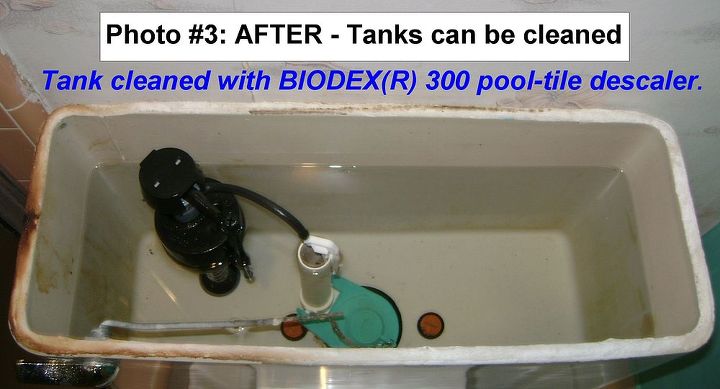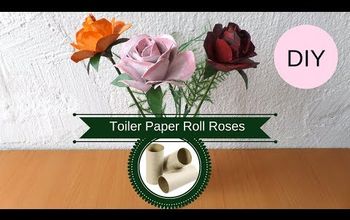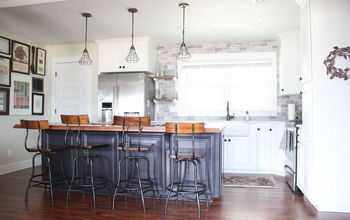Toilets - Why Clean the Tank?

by
Matthew Gingerella
(IC: homeowner)
(New Video Added - Check it out in COMMENTS)
- Have you looked inside your toilet tank lately?
Before you jump into high-gear scrubbing and scouring that toilet ring and crud under the rim, it may be a good idea to lift up that lid and look into the toilet tank. Many of us don’t tend to think about the tank because the toilet bowl takes all of our attention by being so visible.
As shown in Photo your tank hasn’t been maintained well, it can get overrun by thick layers of scale, metal stains, bacteria, mold & mildew. And since there is a direct path of water channels from the tank to the toilet rim and bowl, then they will just keep getting crud building up on them and making your toilet bowl very difficult to keep clean (as shown in Photo
So, Task #1 is to clean the tank well. I will describe how I cleaned this extremely dirty tank to get it to look relatively beautiful in Photo #3.
The Process:
1. Poured in 2-cups of bleach into the full tank to sanitize it; turned off the water valve to the tank; waited 15 minutes and flushed to empty the tank
2. Put on protective gloves.
3. Used a Maximum Strength Pool-Tile Scale Remover (BIO-DEX ® 300; bio-dex.com/products/300-tile-cleaner). DO NOT USE for Septic Systems - use a septic safe cleaner instead.
a. Brushed it on the inner walls of the tank; let sit 10 minutes; then scrubbed with the brush using water from the bottom of the tank as needed.
b. The BIO-DEX® 300 ate right through the thick scale, metal stains, and mildew. CAUTION: Do not get on the outside of the tank or toilet because it will damage the glaze.
4. Rinsed the sides of the tank by pouring in tap water from a pitcher. Added additional pitchers of water to fill the tank – which diluted the dirty acid mixture.
a. Note: The acid water mixture helps clean out the water channels when flushed through.
5. Turned the water valve to the toilet back on, then flushed. Allowed the tank to fill, then flushed again. Repeated several times until the water in the tank was clean.
With the tank finally cleaned and decontaminated, I turned my attention to the rim of the toilet bowl.
6. Used a soft pool-tile pumice stone to scrub the crusty mineral deposits off the bottom and sides of the rim.
7. Inserted rolled up Emery Cloth Sandpaper into the water channel holes a rotated it to remove the deposits.
8. Brushed lime-remover solution on the rim surface and into the water channel holes; waited 15 minutes, then rinsed the rim and holes. (Results shown in Photo
Now the Toilet Bowl.
9. Turned off the water valve to the toilet and flushed to drop the water level.
10. Repeated Steps 6-8 on the toilet bowl to remove all scale
11. Turned on the water valve. Filled and flushed the toilet multiple times to rinse the bowl well.
(Results shown in Photo
Read more of my tips for difficult bathroom cleaning tasks at http://www.selfcleen.com/pages/cleaning-tips
- Have you looked inside your toilet tank lately?
Before you jump into high-gear scrubbing and scouring that toilet ring and crud under the rim, it may be a good idea to lift up that lid and look into the toilet tank. Many of us don’t tend to think about the tank because the toilet bowl takes all of our attention by being so visible.
As shown in Photo your tank hasn’t been maintained well, it can get overrun by thick layers of scale, metal stains, bacteria, mold & mildew. And since there is a direct path of water channels from the tank to the toilet rim and bowl, then they will just keep getting crud building up on them and making your toilet bowl very difficult to keep clean (as shown in Photo
So, Task #1 is to clean the tank well. I will describe how I cleaned this extremely dirty tank to get it to look relatively beautiful in Photo #3.
The Process:
1. Poured in 2-cups of bleach into the full tank to sanitize it; turned off the water valve to the tank; waited 15 minutes and flushed to empty the tank
2. Put on protective gloves.
3. Used a Maximum Strength Pool-Tile Scale Remover (BIO-DEX ® 300; bio-dex.com/products/300-tile-cleaner). DO NOT USE for Septic Systems - use a septic safe cleaner instead.
a. Brushed it on the inner walls of the tank; let sit 10 minutes; then scrubbed with the brush using water from the bottom of the tank as needed.
b. The BIO-DEX® 300 ate right through the thick scale, metal stains, and mildew. CAUTION: Do not get on the outside of the tank or toilet because it will damage the glaze.
4. Rinsed the sides of the tank by pouring in tap water from a pitcher. Added additional pitchers of water to fill the tank – which diluted the dirty acid mixture.
a. Note: The acid water mixture helps clean out the water channels when flushed through.
5. Turned the water valve to the toilet back on, then flushed. Allowed the tank to fill, then flushed again. Repeated several times until the water in the tank was clean.
With the tank finally cleaned and decontaminated, I turned my attention to the rim of the toilet bowl.
6. Used a soft pool-tile pumice stone to scrub the crusty mineral deposits off the bottom and sides of the rim.
7. Inserted rolled up Emery Cloth Sandpaper into the water channel holes a rotated it to remove the deposits.
8. Brushed lime-remover solution on the rim surface and into the water channel holes; waited 15 minutes, then rinsed the rim and holes. (Results shown in Photo
Now the Toilet Bowl.
9. Turned off the water valve to the toilet and flushed to drop the water level.
10. Repeated Steps 6-8 on the toilet bowl to remove all scale
11. Turned on the water valve. Filled and flushed the toilet multiple times to rinse the bowl well.
(Results shown in Photo
Read more of my tips for difficult bathroom cleaning tasks at http://www.selfcleen.com/pages/cleaning-tips
{
"id": "1326",
"alt": "Video shows how to REMOVE a Toilet Ring with a Soft Pool-Tile Pumice Stone, Then, shows how to PREVENT it from coming back by applying a modern Protective Self-Cleaning Coating to the toilet bowl.",
"title": "Video shows how to REMOVE a Toilet Ring with a Soft Pool-Tile Pumice Stone, Then, shows how to PREVENT it from coming back by applying a modern Protective Self-Cleaning Coating to the toilet bowl.",
"video_link": "https://www.youtube.com/embed/ZrMcdtqM3Fg",
"youtube_video_id": "ZrMcdtqM3Fg"
}
{
"width": 634,
"height": 357,
"showRelated": true
}
Enjoyed the project?
Published July 15th, 2013 6:53 PM
Comments
Join the conversation
2 of 63 comments































Frequently asked questions
Have a question about this project?
Why use baking soda in your toilet?